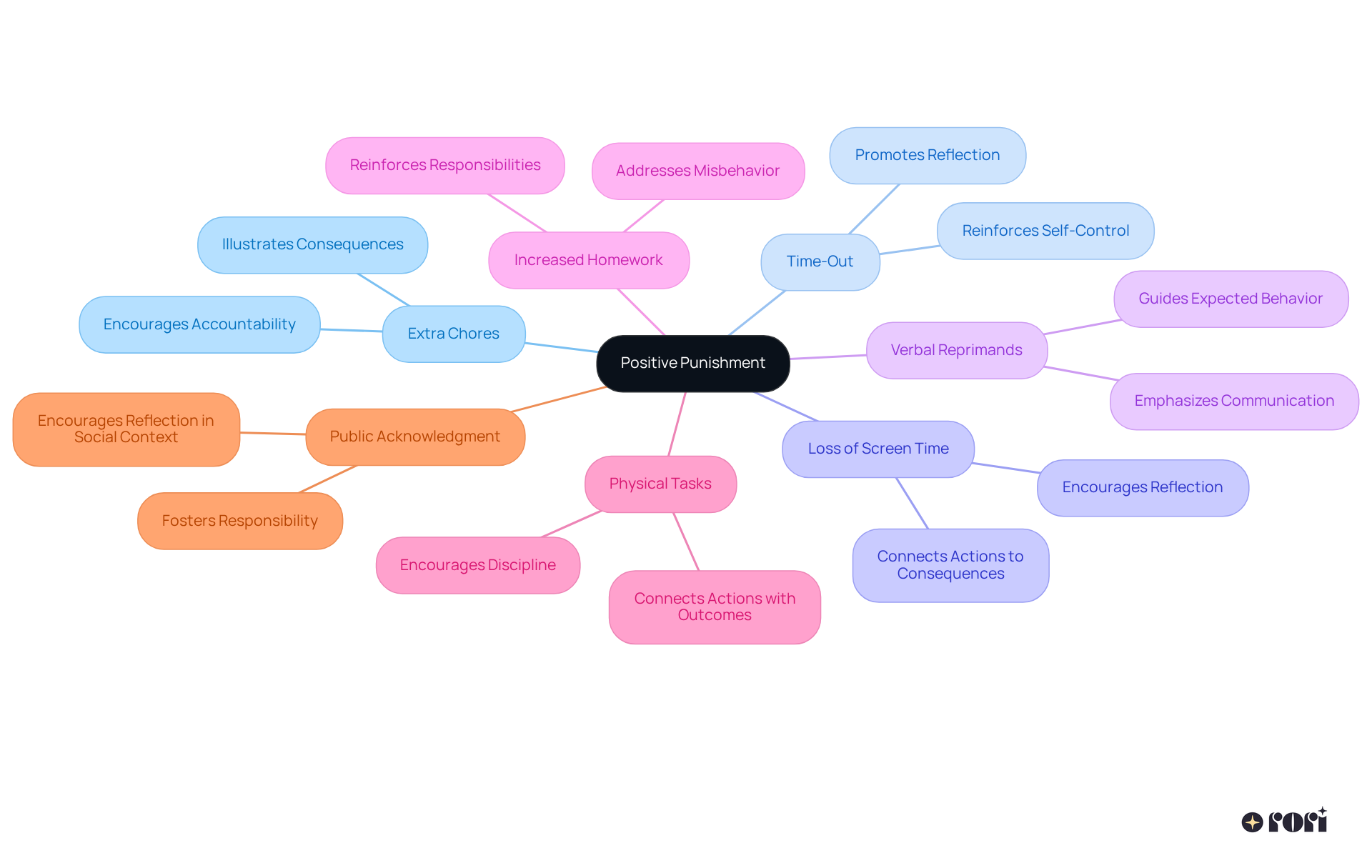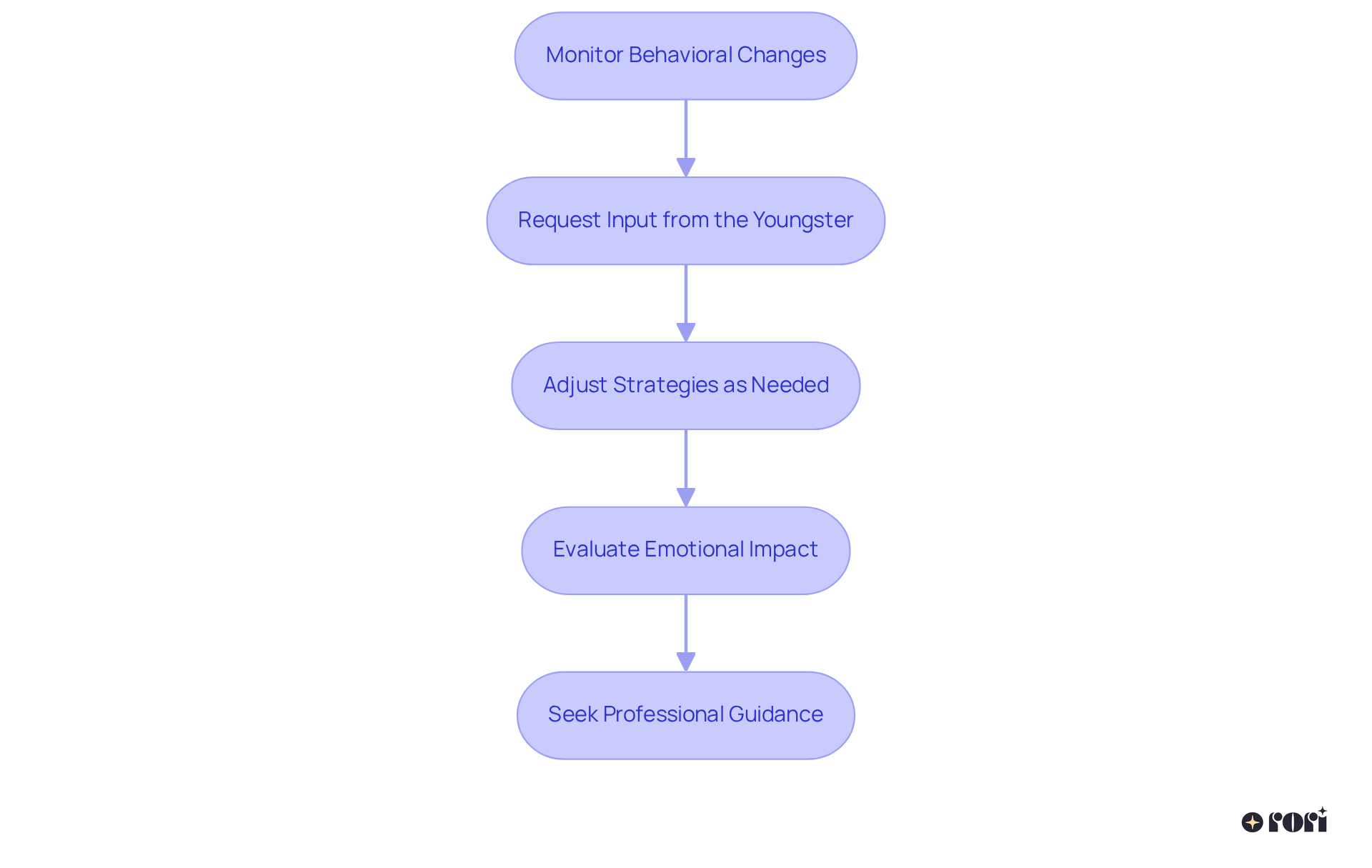This article is all about sharing real-life examples of positive punishment that can help parents encourage accountability and correct behaviors in their children. 🌟 We’ll dive into various methods like:
showing you how these strategies can effectively reinforce the behaviors you want to see. It’s all about being consistent and communicating with your kids about discipline.
As we explore these approaches, let’s think about how they might fit into your parenting journey. By sharing relatable scenarios, we hope to create a sense of belonging and shared understanding. Remember, you’re not alone in this! Let’s explore this together and discover how you can implement these strategies at home.
Understanding the nuances of discipline can be quite a challenge for many parents, especially when it comes to the idea of positive punishment. This approach, which introduces a consequence to reduce undesirable behavior, is more common than you might think. In fact, a significant percentage of children in the U.S. face physical forms of punishment each year!
But here’s the thing: the real challenge is in effectively implementing positive punishment strategies that not only correct behavior but also nurture a supportive environment.
So, what practical examples can parents adopt to navigate this complex landscape of discipline? Let’s explore this together! By sharing relatable experiences and insights, we can ensure that our children learn valuable lessons while feeling loved and supported.
Understand the Definition: Positive reinforcement is all about adding a consequence after a behavior, which actually helps reduce the chances of that behavior happening again. For instance, if a child acts out and is given extra tasks, this can serve as one of the positive punishment examples in real life. Interestingly, a 2014 national survey showed that 37% of children in the United States are spanked each year, which highlights how common this approach is.
Identify Key Elements: For constructive discipline to really work, it needs to be immediate, consistent, and directly related to what the child did. Dr. Natalie Gwyn emphasizes that 'the application of consequences, whether negative or beneficial, should be consistent and carried out promptly following the undesirable behavior.' This way, children can clearly connect their actions with the outcomes they face.
Differentiate from Negative Consequences: It's important to distinguish constructive penalties from negative consequences. While constructive consequences add an undesirable result, negative ones remove something desirable, like taking away privileges or favorite activities when a child misbehaves. However, it's essential to be aware that positive punishment examples in real life, as part of constructive discipline, can sometimes lead to negative mental health effects, such as increased fear and anxiety in some kids, as noted by the University of Central Florida.

Extra Chores for Misbehavior: Assigning extra household tasks can actually be a helpful way to encourage accountability. For instance, if a young person refuses to follow instructions, using positive punishment examples in real life, like asking them to complete additional chores, can really illustrate the consequences of their actions. A case study even found that this method helps young individuals understand the importance of following instructions.
Time-Out from Activities: Taking a young person away from a fun activity for a bit when they act out can reinforce the importance of proper behavior. This approach gives them a chance to think about their actions and understand the need for self-control. Research shows that time-outs can be quite effective when used consistently.
Loss of Screen Time: Cutting back on screen time when a youth doesn’t follow the rules effectively shows them the connection between their actions and consequences. This strategy serves as positive punishment examples in real life, encouraging young individuals to reflect on their choices. A study found that more parents are recognizing the value of setting limits on screen time as a form of discipline.
Verbal Reprimands: Clear and firm reminders about expected behavior can help guide youngsters back on track. This method emphasizes the importance of communication in discipline, helping them grasp what’s expected. Experts suggest that effective communication is crucial for successful behavior management.
Increased Homework: Assigning extra homework or projects when a student disrupts class or doesn’t complete assignments serves as a reminder of their responsibilities. This method utilizes positive punishment examples in real life to address misbehavior while reinforcing the value of diligence and commitment to learning. A case study highlighted how this strategy can improve a young person's understanding of their academic duties.
Implementing small physical tasks, which serve as positive punishment examples in real life, like running laps for inappropriate behavior in sports, can help youngsters connect their actions with real outcomes. This strategy encourages physical activity while teaching discipline. Just remember, it’s important that these tasks are suitable and not humiliating.
Public Acknowledgment of Misbehavior: Addressing misbehavior in front of peers can underline the need for correction, as long as it’s done sensitively to avoid embarrassment. This approach can foster a sense of responsibility and encourage young individuals to reflect on their actions in a social context. Experts advise that public reprimands should be handled carefully to prevent any negative emotional effects.
Integrating these approaches into your parenting can really enhance behavioral outcomes. By consistently using constructive discipline, you help young individuals grasp the repercussions of their actions while nurturing a supportive environment. Let’s explore this together!

Monitor Behavioral Changes: It’s helpful to keep a detailed log of the young person's actions before and after using positive reinforcement. This way, you can clearly see how effective your strategies are and spot any patterns or areas that might need a little extra attention. The American Academy of Pediatrics highlights that physical punishment can lead to increased aggression and mental health issues, so it's important to look for positive punishment examples in real life and monitor behavioral changes closely.
Request Input from the Youngster: Open up the conversation with the young one about how they feel regarding the outcomes and their actions. Research shows that kids can provide valuable insights into their experiences, which can help you tweak your approach. As Theresa Silm from Michigan State University Extension puts it, "Positive discipline helps young individuals understand that their choices, actions, and behaviors all have consequences."
Adjust Strategies as Needed: Flexibility is key! Be ready to modify or even replace strategies that aren’t working out as you hoped. The effectiveness of constructive discipline can vary, and adapting to the young one's needs is vital for promoting positive behavioral changes. Remember, the goal of positive discipline is to teach self-control and understanding.
Evaluate Emotional Impact: Take a moment to assess how the young one is emotionally reacting to the consequences. It’s crucial that the approach doesn’t lead to feelings of resentment or fear. Positive discipline aims to foster self-control and understanding, so it’s essential that they feel supported rather than punished. Research indicates that positive punishment examples in real life, such as corporal punishment, can lead to increased aggression and mental health challenges, making it even more important to evaluate emotional impact.
Seek Professional Guidance: If you're ever unsure about whether your strategies are effective or appropriate, don’t hesitate to consult with behavioral specialists. Their expertise can offer tailored advice and support, ensuring that your methods align with best practices in child development. Let’s explore this together! We’re here to help you every step of the way!

Incorporating positive punishment strategies into parenting can really make a difference in how a child behaves and understands consequences. This approach highlights the value of adding constructive consequences to undesirable actions, ultimately helping kids learn accountability and self-control. By using methods like extra chores, time-outs, and verbal reminders, parents can gently steer their children towards better choices while reinforcing the link between behavior and outcomes.
Throughout this article, we’ve shared various real-life examples that show how positive punishment can be applied in everyday situations. From assigning a bit more homework to implementing small physical tasks, these strategies not only tackle misbehavior but also help children cultivate a sense of responsibility and awareness of their actions. Plus, we’ve emphasized the importance of keeping an eye on behavioral changes and emotional impacts, ensuring that discipline remains constructive rather than harmful.
Ultimately, the significance of positive punishment goes beyond just discipline; it’s a crucial tool for creating a nurturing environment where children can learn, grow, and grasp the consequences of their choices. By approaching discipline with consistency and care, parents can lay a solid foundation that encourages healthy behavioral development and emotional well-being, paving the way for responsible and self-aware individuals. Let’s explore this together and continue supporting our kids on their journey!
What is positive punishment in a behavioral context?
Positive punishment involves adding a consequence after a behavior that reduces the likelihood of that behavior occurring again. An example is giving a child extra tasks when they act out.
How common is positive punishment among children in the United States?
A 2014 national survey indicated that 37% of children in the United States are spanked each year, illustrating the prevalence of this approach.
What are the key elements for constructive discipline to be effective?
For constructive discipline to be effective, it must be immediate, consistent, and directly related to the behavior. This helps children connect their actions with the consequences they face.
How does positive punishment differ from negative consequences?
Positive punishment adds an undesirable result following a behavior, while negative consequences remove something desirable, such as privileges or favorite activities, in response to misbehavior.
What are some potential negative effects of positive punishment?
Positive punishment can sometimes lead to negative mental health effects, such as increased fear and anxiety in children.